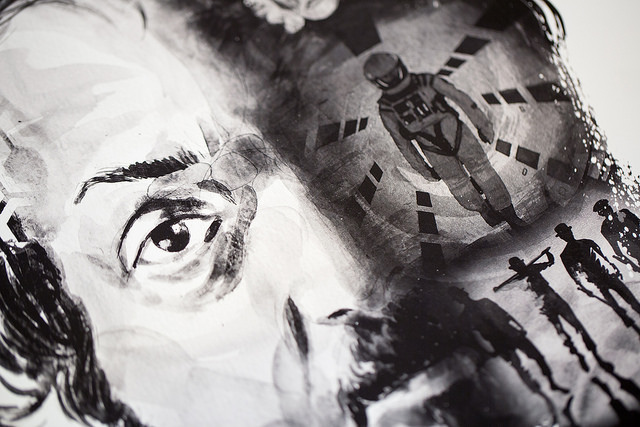“If the cinema, by some twist of fate, were to be deprived overnight of the sound track and to become once again the art of silent cinematography that it was between 1895 and 1930, I truly believe most of the directors in the field would be compelled to take up some new line of work.” So wrote François Truffaut in the nineteen-sixties, arguing that, of filmmakers then living, only Howard Hawks, John Ford, and Alfred Hitchcock could survive such a return to silence. Alas, Truffaut died in 1984, the very same year that saw the release of Nausicaä of the Valley of the Wind, the first animated feature by what would become Studio Ghibli. Had he lived longer, he would certainly have had to grant its mastermind Hayao Miyazaki pride of place in his small catalog of master visual storytellers.
“He doesn’t actually write a script,” says Any-Mation Youtuber Cole Delaney in “Hayao Miyazaki: The Mind of a Master,” the video essay above. “He might write an outline with his plan for a feature, but generally he draws an image and works from there.”
My Neighbor Totoro, for instance, began with only the image of a young girl and the titular forest creature standing at a bus stop; from that artistic seed everything else grew, like the enormous tree that Totoro and the children make grow in the film itself. Delaney also explores other essential aspects of Miyazaki’s process, including the creation of full worlds with distinctive funiki, or ambience; the incorporation of Ozu-style “pillow shots” to shape a film’s space and rhythm; and the creation of protagonists whose strong will translates directly into physical motion.
“What drives the animation is the will of the characters,” says Miyazaki himself, in a clip Delaney borrows from the NHK documentary 10 Years with Hayao Miyazaki. “You don’t depict fate, you depict will.” The master makes other observations on his work and life itself, which one senses he regards as one and the same. “I want to make a film that won’t shame me,” he says by way of explaining his notorious perfectionism. “I want to stay grumpy,” he says by way of explaining his equally notorious demeanor in the Ghibli office. As for “the notion that one’s goal in life is to be happy, that your own happiness is the goal… I just don’t buy it.” Rather, people must “live their lives fully, with all their might, within their given boundaries, in their own era.” The surpassing vitality of his films reflects his own: “Like it or not,” he says, “a film is a reflection of its director,” and in these words Truffaut would surely recognize a fellow auteurist-auteur.
Related content:
Watch Hayao Miyazaki Animate the Final Shot of His Final Feature Film, The Wind Rises
What Made Studio Ghibli Animator Isao Takahata (RIP) a Master: Two Video Essays
How Master Japanese Animator Satoshi Kon Pushed the Boundaries of Making Anime: A Video Essay
The Aesthetic of Anime: A New Video Essay Explores a Rich Tradition of Japanese Animation
Japanese Animation Director Hayao Miyazaki Shows Us How to Make Instant Ramen
Based in Seoul, Colin Marshall writes and broadcasts on cities, language, and culture. His projects include the Substack newsletter Books on Cities, the book The Stateless City: a Walk through 21st-Century Los Angeles and the video series The City in Cinema. Follow him on Twitter at @colinmarshall or on Facebook.






